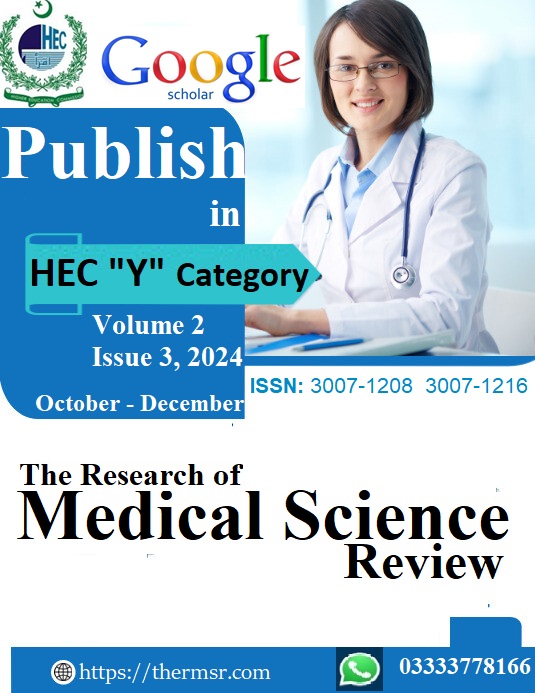PATTERN OF ANTIBIOTIC SUSCEPTIBILITY OF URINARY TRACT PATHOGENS AGAINST COMMONLY USED ANTIBIOTICS IN PATIENTS OF A TERTIARY CARE HOSPITAL OF DISTRICT SWAT
Keywords:
S. aureus, E. coli, E. faecalis, P. aeruginosa, Disease, Urinary SystemAbstract
Background: Urinary tract infection is a widespread health condition and most commonly caused by bacteria. It is estimated that annually about 150 million cases of UTIs occur worldwide which is one of the key public health complications.
Objective: To determine the pattern of antibiotic susceptibility of urinary tract pathogens against commonly used antibiotics in patients of a tertiary care hospital of district Swat
Methodology: The current cross-sectional research was conducted at the Department of Microbiology, Government Degree College Madyan Swat and the Saidu Group of Teaching Hospital Swat. The study duration was six months from January 2024 to June 2024. A total of 100 patients were included in our study. 100 mid-stream urine samples were collected from both males and females with a urinary tract infection by using sterile urine containers. Further laboratory procedures were performed in the Department of Microbiology, Government Degree College Madyan Swat. Culturing was done for all the samples by using CLED media. The isolates were identified by using gram staining and conventional biochemical testing. Kirby-Bauer Antibiotic Susceptibility testing was done for all the isolates. Data were entered and analyzed in IBM SPSS-24.
Results: In the current study Gram-negative bacteria that was most frequently identified in UTIs was E. coli, while gram- positive bacteria that was frequently identified was S. aureus in suspected patients in Swat. The highest risk age groups for UTI were16-30 years and 46-60 years. Among genders, females were more affected compared to males. Imipenem was the highly responsive drug for gram-negative and the highly responsive drug for gram-positive was Nitrofurantoin.
Conclusion: This study concludes that E. coli was the primary cause of UTI. The results of the antibiotic sensitivity test showed that the majority of the isolated bacteria in this investigation are resistant to routinely used antibiotics. Culture and sensitivity should be done before prescription of antibiotics.
Downloads
Downloads
Published
Issue
Section
License

This work is licensed under a Creative Commons Attribution-NonCommercial-NoDerivatives 4.0 International License.














